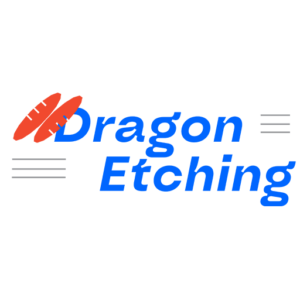Wet film etching is another key technique in the precision metal etching process, offering an alternative approach to achieving fine patterns and features on thin metal substrates.
1. Substrate Preparation:
- Just like in dry film etching, the process begins with a clean metal substrate. The substrate is typically cleaned to remove any contaminants, ensuring proper adhesion of the photoresist layer.
2. Application of Photoresist:
- Instead of dry film resist, wet film etching utilizes a liquid photoresist. The photoresist is applied to the metal substrate by various methods such as spin coating, dip coating, or spray coating. It forms a thin, uniform layer over the entire surface.
3. Soft Baking:
- After the photoresist is applied, it undergoes a soft baking process. This step involves heating the substrate to remove solvent and to ensure the photoresist adheres well to the metal surface.
4. Exposure to UV Light:
- A photomask or phototool is used to project a specific pattern onto the photoresist-coated substrate. The exposed areas of the photoresist become chemically altered and become either more or less soluble depending on the type of photoresist used.
5. Development:
- The substrate is then immersed in a developer solution. The developer removes the soluble regions of the photoresist, revealing the underlying metal surface in a pattern that corresponds to the exposed areas of the photoresist.
6. Etching:
- The substrate, with the developed photoresist pattern, is immersed in an etching solution, which chemically removes the exposed metal areas. The etching solution can be an acid or alkaline solution depending on the specific metal being etched. Similar to dry film etching, the etchant selectively dissolves the metal while leaving the protected areas covered by the photoresist untouched.
7. Rinsing and Inspection:
- After etching, the substrate is thoroughly rinsed to remove any remaining etchant and residual photoresist. The etched features are inspected for accuracy and quality at this stage.
8. Stripping of Photoresist:
- The photoresist is typically removed after etching. This can be done using a solvent that dissolves the photoresist without affecting the etched metal features.
9. Additional Processing (Optional):
- Depending on the specific application, additional processes such as passivation, plating, or other post-etch treatments may be applied to the metal substrate to enhance its properties or protect it from environmental factors.
10. Final Inspection and Quality Control: – The finished metal component undergoes a final inspection to ensure that the etched features meet the required specifications and quality standards. This may involve measurements, visual inspections, and other quality control procedures.
Wet film etching offers many of the same advantages as dry film etching, including high precision, customization, and compatibility with various metal substrates. However, it has its own set of considerations and requirements, such as the need for liquid photoresists and precise control of the coating and soft baking processes. Wet film etching is commonly used in industries that require intricate metal components and where the flexibility of using liquid photoresists is beneficial.
Wet film etching, as an alternative to dry film etching, possesses several distinctive features and advantages, making it suitable for specific applications.
- Homogeneous Coating Thickness:
- Wet film etching allows for the deposition of a highly uniform and consistent photoresist layer on the metal substrate. This results in even etching across the entire surface, reducing variations and defects in the final product.
- Excellent Adhesion:
- Liquid photoresists can offer strong adhesion to metal substrates, ensuring that the resist adheres firmly during the etching process. This helps maintain the integrity of the mask pattern and prevents delamination.
- Variety of Photoresists:
- Wet film etching can use a wide range of photoresist types, including positive and negative photoresists, each with its own characteristics. This versatility allows for the selection of the most suitable resist for the specific application.
- Versatile Substrate Compatibility:
- Wet film etching is compatible with various metals and alloys, similar to dry film etching. This versatility enables manufacturers to choose the material that best suits their requirements.
- Multi-Layer Etching:
- In some cases, wet film etching can be used for multi-layer etching processes where different metals or materials are etched sequentially, allowing for complex component manufacturing.
- High Aspect Ratio Etching:
- Wet film etching can achieve high aspect ratio features, meaning it is capable of etching deep, narrow channels or holes in metal substrates. This is crucial for certain microfabrication applications and MEMS devices.
- Controllable Etching Rate:
- The etching rate in wet film etching can often be precisely controlled by adjusting parameters such as etchant concentration, temperature, and agitation. This control is important for achieving specific etching depths or feature dimensions.
- Rapid Prototyping:
- Wet film etching is suitable for rapid prototyping and small-batch production, providing a quicker turnaround time compared to some other metal fabrication methods.
- Minimal Tool Wear:
- Since wet film etching is a chemical process, it does not involve physical tooling or machining. Consequently, there is no tool wear, which can be advantageous for maintaining consistent quality over time.
- Environmental Considerations:
- Similar to dry film etching, wet film etching is generally considered environmentally friendly as it does not produce significant hazardous waste or emissions, particularly when using environmentally friendly developer and etchant solutions.
- Integration with Other Processes:
- Wet film etching can be easily integrated into larger manufacturing processes, making it compatible with subsequent steps such as plating, passivation, or additional patterning steps.
- Quality Control and Inspection:
- Wet film etching, like dry film etching, allows for rigorous quality control and process monitoring, ensuring that final components meet specified tolerances and standards.
Wet Film Precision Metal Etching Process:
Equipment:
- Coater for Wet Film Resist:
- Purpose: Used to evenly apply a wet film resist onto the metal surface.
- Drying Oven:
- Purpose: Dries the wet film resist after application, ensuring proper adhesion and consistency.
- UV Exposure Unit:
- Purpose: Exposes the dried wet film resist to UV light through a photomask, creating a pattern on the resist.
- Developer:
- Purpose: Contains a chemical solution that removes the unexposed portions of the wet film resist, revealing the metal surface beneath.
- Etching Machine:
- Purpose: Selectively removes metal from the exposed areas using chemical etching solutions, creating the desired pattern.
- Stripping Machine:
- Purpose: Removes any remaining wet film resist from the metal surface after etching.
Workflow:
- Metal Cleaning:
- Clean the metal sheet or component to remove impurities and contaminants.
- Wet Film Resist Application:
- Place the metal sheet or component in the coater.
- Apply the wet film resist evenly onto the cleaned metal surface. This resist is typically a liquid that covers the entire surface.
- Drying:
- Transfer the metal with the applied wet film resist to a drying oven.
- The oven dries the resist, evaporating any solvents and ensuring that the resist adheres properly to the metal.
- Exposure:
- Place the metal with the dried wet film resist under the UV exposure unit.
- Expose the resist to UV light through a photomask that carries the desired pattern. The UV light cures the resist in the exposed areas, making it resistant to etching.
- Development:
- Transfer the exposed metal to the developer.
- The developer contains a chemical solution that dissolves the unexposed portions of the wet film resist, revealing the metal surface underneath. This reveals the pattern for etching.
- Etching:
- Immerse the metal into the chemical etching machine containing the etching solution.
- The chemical selectively removes the exposed metal areas, leaving the protected areas intact. Etching continues until the desired depth or pattern is achieved.
- Rinsing and Cleaning:
- Rinse the metal thoroughly with water or a suitable rinse solution to remove etching chemicals and residues.
- Stripping (if needed):
- Use a stripping machine or stripping chemicals to remove any remaining wet film resist from the metal surface. This step ensures a clean, finished product.
- Final Inspection:
- Inspect the etched metal for quality, accuracy, and adherence to specifications.
- Any necessary post-processing or quality control checks are performed at this stage.
The wet film precision metal etching process is suitable for applications where fine details and intricate patterns are required. It offers an alternative to dry film etching and is commonly used in industries such as electronics, microfabrication, and precision engineering.
If you are interested in finding out about Wet Film Metal Etching Equipment overall price. Please do not hesitate to contact us. Usually we will contact you within 2 days after we receive your information.


